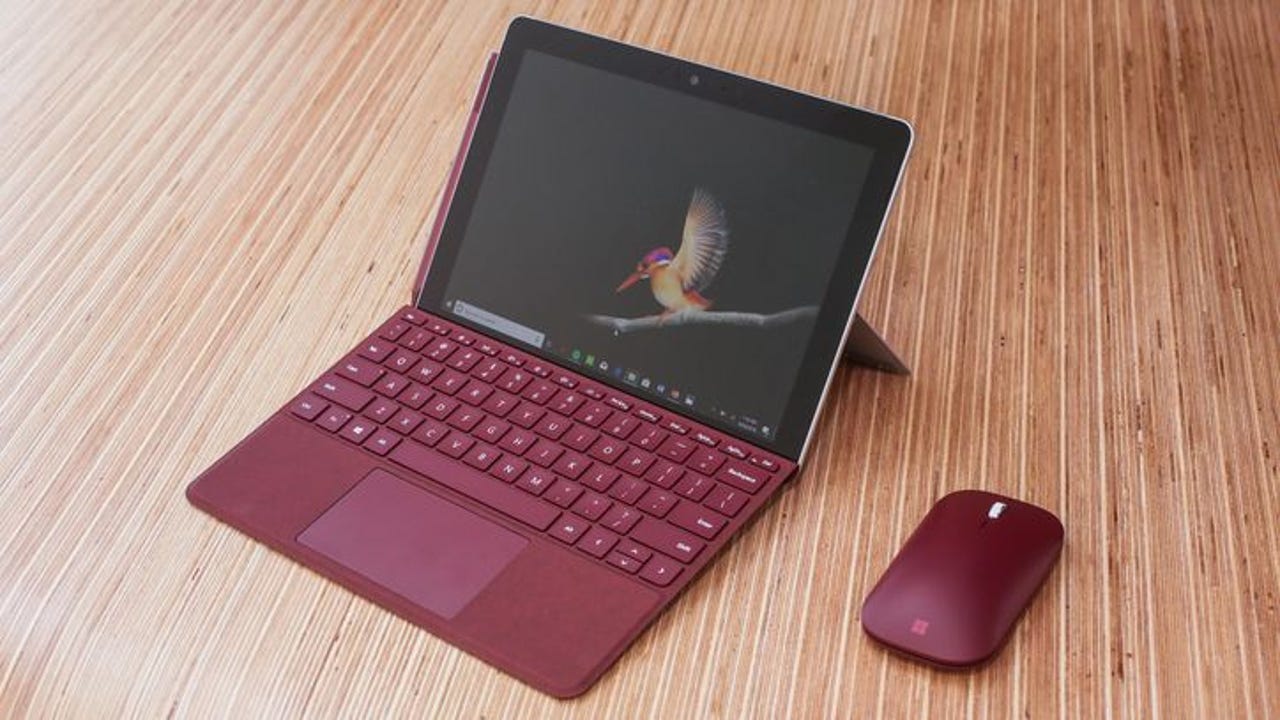Can Microsoft's Surface Go unseat Apple's iPad?


CNET
Microsoft has unveiled its challenger to the iPad. Called the Surface Go, the new tablet is aimed pretty much across the board to everyone that uses a tablet -- be they education, consumer, or business customers.
But the tablet space is nowadays essentially owned by the iPad. Sure, there are a few Android (primarily now Amazon tablets) and Windows-based systems out there (with Microsoft's own Surface line being a prominent player in the PC space), but the iPad is the pacesetter in this market.
Also: Microsoft Surface Go: 10-inch Windows tablet coming Aug. 2 for $399 CNET
Another factor to bear in mind is that the tablet market is shrinking. This could work in Microsoft's favor in some ways because it might indicate that buyers are bored with what's currently on offer and something new might reinvigorate sales.
On the other hand, Microsoft might very well be fighting a headwind. Only time will tell.
But what of the tablet itself?
I see the tablet market breaking down into two segments -- there's the price-conscious end, and there's those who want high-performance and features.
So where does the Surface Go fit in here?
Here's the official price list:
Consumer SKUs
- Wi-Fi: 4 GB RAM, 64 GB Storage SSD, $399 USD Estimated Retail Price (ERP)
- Wi-Fi: 8 GB RAM, 128 GB Storage SSD, $549 USD ERP
Commercial SKUs
- Wi-Fi: 4 GB RAM, 64 GB Storage SSD, $449 USD ERP
- Wi-Fi: 8 GB RAM, 128 GB Storage SSD, $599 USD ERP
Apple's cheapest iPad is the 32GB Wi-Fi-only version, and that is priced at $329. The Surface Go priced at $399 seems to offer more given that it comes with 64GB of storage, but it's important to bear in mind that consumer model runs Windows 10 Home in S Mode, and those wanting full Windows 10 will either need to upgrade the operating system or buy the commercial version.
Also: Apple iPad (2018) review: The best gets even better
The 128GB Wi-Fi-only iPad is priced at $429, and all of a sudden the Surface Go at the higher storage tier feels pricey.
I also feel that the RAM configurations for the Surface Go add more confusion to the mix. Without hands-on time with the different configurations, it's going to be hard to know whether 4GB of RAM is enough or 8GB will be needed for all but the most basic of tasks.
But now bear in mind what you get with the Surface Go.
First off, you're getting Windows. Don't for one moment underestimate this. OK, Windows 10 Home in S Mode might be restrictive, but this can be upgraded to Windows 10 Home if you so desire. That flexibility to run Windows applications -- within the capability of the device -- will be invaluable to some.
The Surface Go also features a USB-C port and a micro SD expansion slot.
The iPad doesn't have these features.
On paper, Microsoft claims the battery life for the Surface Go is 10 hours, in line with the iPad, but this is again something that will need to be tested in the real world.
Also: Microsoft Surface Go: What the pros need to know TechRepublic
You can also kit out the Surface Go with lots of quite pricey accessories. The snazzy Surface Type Cover adds $99 or $129 to the price, depending on which you get. The Surface Pen is another $99, while the new Bluetooth-enabled Surface Mobile Mouse is more reasonably priced at $34.99.
All in all, I'm left unsure as to how the Surface Go stacks up against the iPad. On paper the Surface Go feels like a reasonably-priced, well-specced tablet, but the messiness of the different RAM configurations and the different flavors of Windows 10 adds a level of confusion that doesn't exist for iPad buyers.
On the flipside, a Windows-powered tablet with a USB-C port and a micro SD expansion slot will be attractive to certain users (and it's likely that these are the sorts of users who will be better placed to navigate the complexity caused by the different RAM and Windows 10 options).
The Surface Go is certainly an interesting device and builds on the foundation carved out by the existing Surface hardware, but as to whether it will do much to shift the needle with relation to market share or unit sales, I'm far from convinced.
Time will tell.
See also:
- Seven challenges facing the tech industry
- iOS 12 public beta: Should you install it?
- iOS 12/watchOS 5/tvOS 12: Which devices are supported?
- iOS 12: The hidden feature I won't be switching on
- How to download and install iOS 12 beta
- Your iPhone is tracking your movements and storing your favorite locations all the time
- iPhone battery life bad after installing iOS 11.4? Here's what you can do
- iOS 11.4 tips, tricks, and secrets everyone should know
- The coolest USB flash drive you can buy: Apricorn Aegis Secure Key 3z